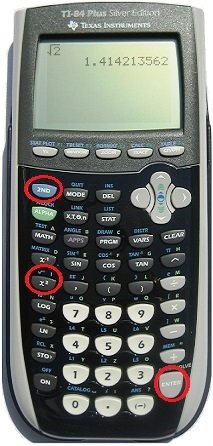Lesson 4: Estimating Square Roots
When the answer to a square root expression is not a whole number, you can estimate by comparing to the closest square numbers.
Reminder: Examples of square numbers include: \(25 \; (5^2), 81 \; (9^2), 100 \; (10^2) \) and \( 169 \; (13^2)\)
To estimate the square root of \(10\), find the closest perfect square:
| \( \textcolor{blue}{9} \) | \( \textcolor{green}{10} \) | \( \textcolor{orange}{16} \) |
Now take the square root:
| \( \textcolor{blue}{\sqrt{9}} \) | \( \textcolor{green}{\sqrt{10}} \) | \( \textcolor{orange}{\sqrt{16}} \) |
The square root of \(10\) must be in-between \(3\) and \(4\):
| \(\textcolor{blue}{3}\) | \(\textcolor{green}{\sqrt{10}}\) | \(\textcolor{orange}{4}\) |
Since \(10\) is closer to \(9\), approximate the square root of \(10\) as:
\( \textcolor{green}{\sqrt{10} \approx 3.2} \)
To evaluate the square root of a non-square number, use the square root button on your calculator:

Estimate the square root before you use your calculator. Since \(24\) is just smaller than \(25\) and the square root of \(25\) is \(5\), the square root of \(24\) should be around \(4.9\).
\(\sqrt{24} = 4.898979\)
Estimate the square root: